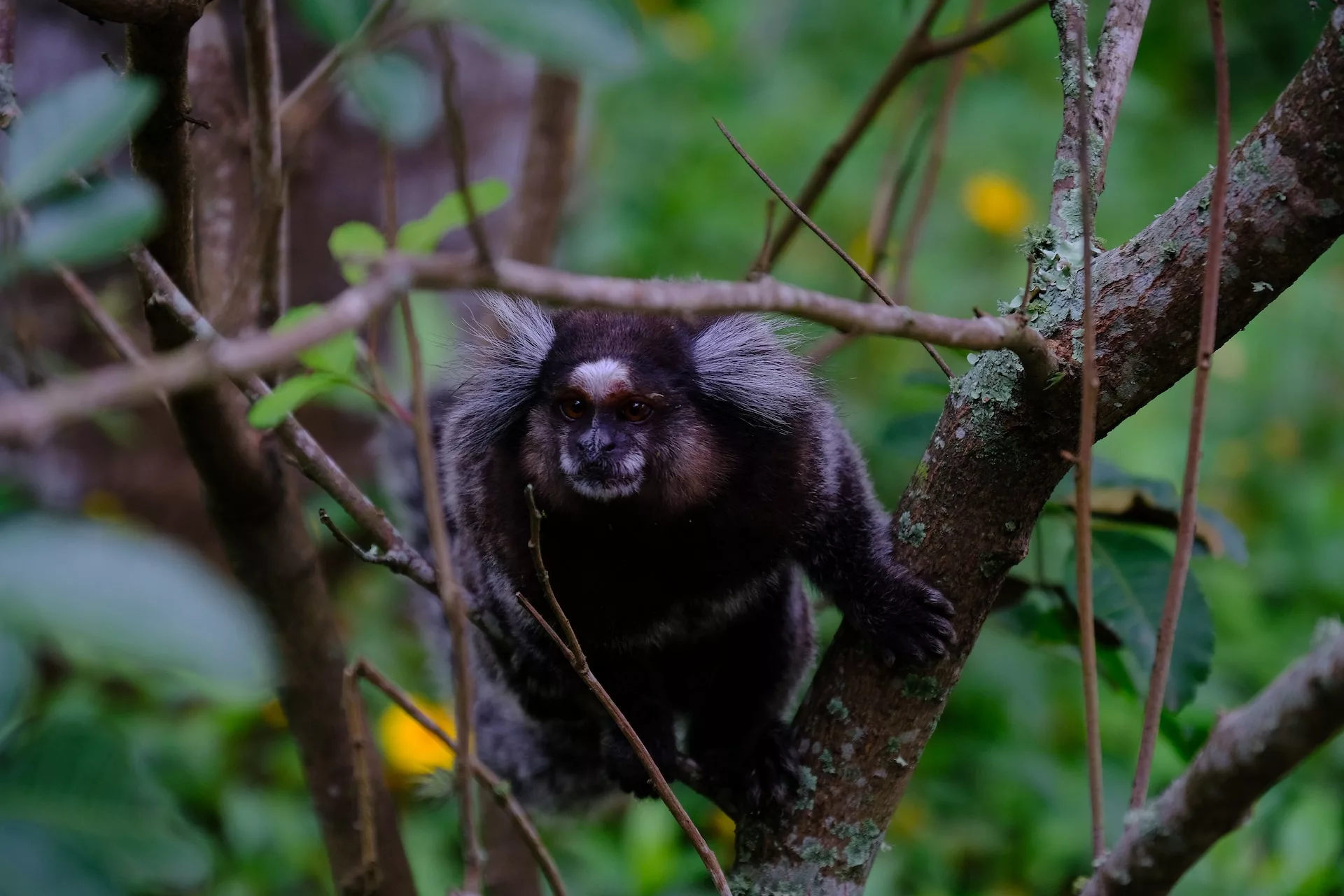Recent evidence suggests that non-identical Marmosets may share more genetic information than thought, due to twin-swapping of brain cells during development. Photo credit: Simone Dinoia via Unsplash
Scientists in the United States have found evidence that marmoset twins may swap brain cells during development.
The study of twins both in humans and other animals has long been important in neuroscience and genetics. On average, non-identical (fraternal) twins share around 50% of their genes. However, a phenomenon known as chimerism — when some cells in the body come from another individual — can increase the relatedness of non-identical twins beyond this. In the uterus, twins share a circulatory system, with blood passing between them via the mother’s placenta.
During development, hematopoietic stem cells (cells that differentiate into specialised blood cells) can pass from one twin through the placenta to the other. These stem cells will develop into mature blood cells that contain the twin’s genome, meaning that an individual will carry some of its twin’s cells for the rest of its life. Thanks to these shared genes, chimeric twins share more DNA than the usual 50%.
This [sex cell chimerism] leads to the surprising possibility that — if it is one of these cells that forms the embryo — offspring would be the biological children of the twin, not the true parent.
Marmosets, a lineage of small monkeys native to Central and South America, are of particular interest in studies of chimerism, as they mostly give birth to non-identical twins or triplets. Due to the shared circulatory system in the mother’s uterus, 12-80% of an individual’s blood cells can be its twin’s. Chimerism also occurs in other organs. For example, other stem cells are transferred through the blood during development, such as those which will become reproductive cells. This would mean that within one individual, there would be eggs or sperm which carry the DNA of its sibling. This leads to the surprising possibility that — if it is one of these cells that forms the embryo — offspring would be the biological children of the twin, not the true parent. A study of Wied’s black tufted-ear marmosets (Callithrix kuhlii) found evidence in 5 out of 15 family lines that individuals had passed their twin’s genes onto their offspring, suggesting that it is possible that sex cell chimerism occurs in marmosets.
It may not only be blood and reproductive cells that are swapped between twins, but brain cells too. This could have a direct impact on brain development and behaviour. A recent study by Ricardo del Rosario and colleagues at Harvard University suggests that twins may swap microglia and macrophages, two types of cells found in the brain important for repairing damage and regulating the wiring of neural pathways. These cells also develop from the hematopoietic stem cells that can be exchanged between twins in the uterus. From the blood, they move to the brain and differentiate into specialised cells.
The presence of twin-derived microglia and macrophages was confirmed by studying RNA sequences (chains of nucleotides derived from DNA) from the brain cells of 11 marmosets. The study found that 20-52% of the marmosets’ microglia and 18-64% of their macrophages contained RNA sequences that came from their twins. Manus Patten of Georgetown University states that these cells ‘certainly have the capacity to influence the brain’s development and therefore the marmosets’ behaviour’. However, it is not yet known exactly what impact these shared cells have on an individual.
The study had a small sample size, and for at least four of these marmosets the researchers have stated that there is likely error in these estimates, as the sequencing for the twin’s genome was only obtained from cheek cells. While the results suggest the possibility of chimerism in brain cells, further study is needed to discover how prevalent this is in the population, and its consequences, if any, for the behaviour of individuals.
It may not only be blood and reproductive cells that are swapped between twins, but brain cells too.
Researchers have speculated that overall chimerism within the body may be important because it increases relatedness within social groups, which makes cooperation between individuals more likely. It is also thought that chimerism may influence paternal care: males will more frequently carry chimeric offspring. Scientists have speculated that this may be because chimeric individuals have a higher proportion of the father’s DNA and, therefore, give the father greater confidence in his paternity. However, the direct influence of brain cell chimerism on the individuals themselves is less clear.
Marmosets are not the only species where twins share a circulatory system prior to birth. Chimerism in blood cells is also seen in human twins, with up to 8% of dizygotic twins found to show evidence of shared cells. Therefore, it is also possible that, like marmosets, human twins swap brain cells during development. This possibility may be important in the fields of medicine, genetics, evolution and anthropology, and further research will allow a greater understanding of what it means to be a twin.





